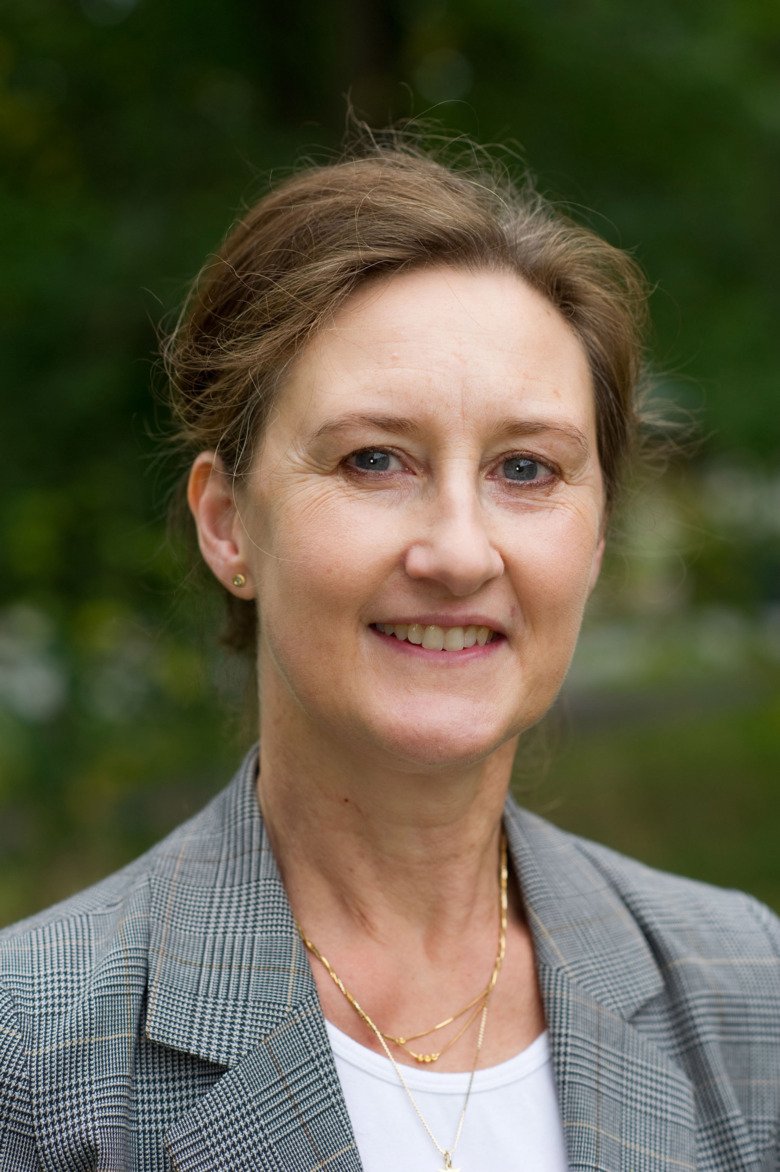Vital comprehensive perspective on antibiotic resistance
Global figures betray a worrying situation. At the same time, it appears the world has woken up. Our PopSci magazine, Medicinsk Vetenskap, has taken the temperature of the fight against antibiotic resistance.
Text: Agneta Borgström, first published in Swedish in Medicinsk Vetenskap nr 4 2016
The figures show the seriousness of the situation. At least 700 000 people all over the world are already dying of infectious diseases each day because of resistance to various drugs. By far the most serious is antibiotic resistance, which affects the poorest people in low-income countries when medicines no longer work in cases of pneumonia and other serious bacterial infections.

Göran Tomson, Professor of International Health Systems Research at Karolinska Institutet, still sees a light at the end of the tunnel. An important step forward was taken in 2015 by the World Health Organization (WHO) when it presented its global action plan. But perhaps more decisive was the UN meeting in September when the General Assembly devoted a whole day to the issue of antibiotic resistance.
"This sends a signal that this is not just about health, but also has a major impact on other policy areas such as the economy and the environment and that the problem must be tackled through global and inter-sectoral cooperation," argues Göran Tomson, who is also one of the co-founders of the international network ReAct, which is working to stop the spread of antibiotic resistance.
In parallel with the problem of resistance is also the problem of access.
“Another problem in many low-income countries is that the health system is unable to ensure that children who need them gain access to existing antibiotics. This is estimated to cause over 400 000 childhood deaths around the world each year,” says Göran Tomson.
Requires a systematic perspective
He and other researchers have become increasingly convinced that the issue of antibiotic resistance requires a systematic perspective and demands a comprehensive view.
“We cannot, for example, restrict ourselves to only regulating the use of antibiotics in humans, we must also get involved in how these are used in animals and how this affects the environment because everything is interlinked. We need to work locally, nationally and globally simultaneously as bacteria do not care about national boundaries. In terms of the research community, this means that we need to link together research disciplines such as health systems research, epidemiological research into how contagious diseases are spread, develop and stopped, and laboratory research in order to, for example, find new antibiotics,” says Göran Tomson.
To this end, a new research project bearing the name IMPACT* has been initiated in a collaboration between China and Sweden. It is based in the province of Shandong, commenced in 2014 and will run until 2018. China is one of the world’s largest manufacturers and users of antibiotics and a high rate of resistance is feared as a result. This research cooperation aims to produce new strategies to control the spread of antibiotic resistance in the healthcare sector, as well as within animal husbandry.
The idea is to allow what is known as the One Health perspective to permeate all work. This means that a combined approach is taken to the environment and the health of animals and humans.

According to Cecilia Stålsby Lundborg professor and subject representative in global health at Karolinska Institutet, awareness of the problem has increased in China.
“The country has published a national action plan that has been adopted by twelve Chinese ministries in areas such as healthcare and agriculture. This plan contains a large number of measures that include producing better diagnostic methods and surveillance systems and increased research expertise,” she says.
Working with Chinese researchers
Cecilia Stålsby Lundborg and other Swedish researchers have been working with Chinese researchers on this issue for some time. A study published in 2014, underlines the incidence of multidrug-resistance ESBL-producing Escherichia coli bacteria in the gut flora of the population, i.e. bacteria that produce enzymes that break down the type of antibiotics whose effective part is beta-lactam, which results in the antibiotic no longer functioning.
"The results were worrying. Forty-two per cent of the participants in the study has these bacteria, varying between 22 and 64 per cent in different villages," says Cecilia Stålsby Lundborg.
It is fortunate then that another study in the Chinese metropolis Shanghai revealed a reduction in the use of antibiotics in the entire healthcare sector, both among inpatients in hospitals and among primary care patients between 2009 and 2014.
“Reducing the use of antibiotics is important, but unfortunately this does not make it certain that resistance will decrease, at least not immediately,” says Cecilia Stålsby Lundborg.
The reduction in the use of antibiotics could be explained by the fact that many initiatives have been implemented, among them a national campaign.
“One benefit of countries that are as centralised as China is that it enables guidelines to have an impact more simply and quickly,” argues Cecilia Stålsby Lundborg, who still sees many challenges in changing the use of antibiotics in practice.
Involving guidelines
India is another major user of antibiotics, where the efforts involving guidelines are marked by other difficulties. One example is that the country’s partly autonomous states do not always implement central proposals. In spite of a national policy to combat microbial resistance that was adopted in 2011 in order to reduce the use of antibiotics in hospitals and improve infection control, the desired effect has not been achieved. A new plan will now be adopted by the government.
“Awareness about the consequences of antibiotic resistance and the need to improve the use of drugs has increased among both healthcare personnel and the general public so it is hoped that the new plan will be better received,” says Sujith Chandy, professor at Christian Medical College in Vellore, India and researcher at the Department for Public Health at Karolinska Institutet.

India also has enormous challenges in the field of health. Part of India’s population lacks reasonable sanitary conditions and access to safe drinking water at the same time as simple infectious diseases run riot. Researchers estimate that 10–15 per cent of all E. coli infections and 30–40 per cent of all Klebsiella pneumoniae infections, which cause pneumonia, are resistant to the standard treatment.
At the same time, it is easy for many Indians to obtain antibiotics. Competition between manufacturers means that these drugs are cheap and they can often be obtained without a prescription. Sujith Chandy emphasises how crucial it is to monitor prescribing of antibiotics in low and middle-income countries.
“But it is also a big challenge. There are often major differences between different clinics, with many lacking computers, for example. The problems associated with medicines legislation, budgets and other resources are enormous,” says Sujith Chandy.
But it is possible to find methods. The results from one of his projects in Vellore in India, which involved drug statistics being collected from clinics, together with examples from other developing countries, provide interesting information on which to build, he contends.
“Together with the WHO, we have begun the work to create new surveillance systems for low-income countries,” says Sujith Chandy.
Global action plan
Good surveillance and increased research is also one of the objectives in the WHO’s global action plan, which was launched in 2015. But this is not sufficient to meet the global threat. The plan contains a further four objectives for the countries of the world to work towards. Prevention of infections is one objective, and using antibiotics more correctly is a third. A fourth objective is to increase general knowledge of how antibiotics are to be used and how this is linked to the development of resistance.
“Greater knowledge is required in the general population and among healthcare personnel. Many people know that a cold often takes ten days to pass and that fever is common and normal and does not require antibiotics,” says Cecilia Stålsby Lundborg.
The fifth objective concerns creating the economic conditions for the development of new antibiotics, vaccines, diagnostic tools and other interventions that can be of benefit to everyone in the world.
Increasing the pace and interest within the pharmaceutical industry requires new business models, argues Göran Tomson, who refers to the idea that investments in antibiotics research must be kept separate from profits from the companies’ sales.
“Using global funds, for example, it could be possible to disconnect the financial investments in antibiotics research, which has very high costs, from the companies’ profits from volume sales. A model such as this could promote access to antibiotics in low-income countries as well,” contends Göran Tomson.
In addition, according to Cecilia Stålsby Lundborg, new treatment principles need to be developed.
“This needn’t be restricted to antibiotics; it can also encompass other drugs or treatment procedures.”
A lack of surveillance
One area that also affects development, but about which not so much is said in the context of health, is the use of antibiotics in animal production. Here there is a lack of surveillance and measurements in many countries. According to the Organization for Economic Cooperation and Development (OECD), total global consumption of antibiotics in animal rearing and aquaculture was around 63 000 tonnes in 2010, a figure that is expected to increase. Major users of antibiotics for animals are China, India, Brazil, the United States and Germany. In recent years, China has started a research initiative to control the use of antibiotics in animal production.
A worrying report emerged from China last year stating that a newly discovered resistance gene called mcr-1 can be spread between bacteria and make them resistant to colistin, an antibiotic that is used as the last resort when other drugs no longer work. The gene was found in bacteria from chickens, pigs and humans.

“Researchers have pointed to an extensive use of colistin as a means of promoting growth in animal production and argue that the resistance found in bacteria from humans originates in animals. China’s ministry of agriculture has subsequently made the decision to ban the use of colistin to promote growth in animals,” says Christina Greko, veterinarian and antibiotics expert at the Swedish National Veterinary Institute.
She also mentions the encouraging steps taken in some countries, for example the United States.
“Up until 2014, 98 per cent of all antibiotics sold went to animals without the need for a veterinary prescription, but public authorities are now working to rectify this. Decisions have been made gradually and from 2017, veterinarians must always be involved when antibiotics are administered to animals.”
Antibiotics in animal production
Data from the European Medicines Agency shows that the use of antibiotics in animal production differs markedly between European countries, with Finland, Iceland, Norway and Sweden at the bottom, while Italy and Spain are among the countries with the highest level of use. The resistance figures also vary.
“This is due not just to antibiotics in animal feed, but also what infectious diseases control is in place. A lot of buying and selling of animals between farms increases the spread of disease,” says Christina Greko.
All antibiotics, both those that are taken by humans and those taken by animals, end up in the environment sooner or later.
“Regardless of whether the water goes through treatment plants, waste antibiotics and antibiotic-resistant bacteria end up in the environment. We have recently compiled a synthesis for the WHO’s South-East Asia region and this shows a high incidence of both waste antibiotics and resistant bacteria in the environment in countries including India and Thailand, but there is nothing to indicate that the same problem is not present in all countries. This is a challenge that requires more attention and a great deal of research,” says Cecilia Stålsby Lundborg.
*IMPACT is an abbreviation for the Sino-Swedish Integrated Multisectoral Partnership for Antibiotic Resistance Containment.
Why resistance is a bad thing
The development by bacteria of resistance to antibiotics, which then no longer work, has become a major global threat to human health as it increases the risk of death and long-term morbidity and increases the length of care. The whole of modern healthcare is therefore threatened as antibiotics are also used in cancer surgery and transplantation surgery, for example.
